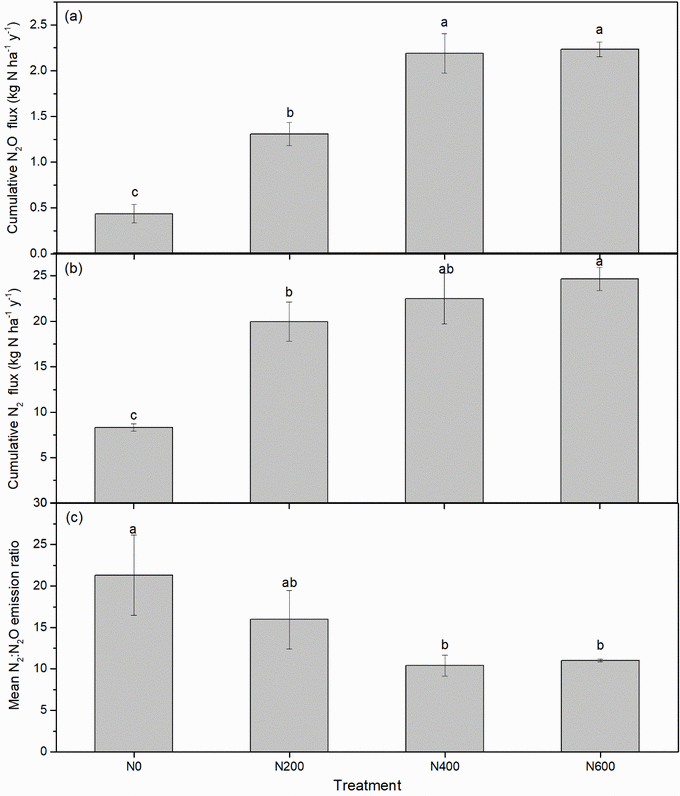- Home >> News&Events >> Events
Seasonal variations in N2 and N2O emissions from a wheat - maize cropping system
Soil N2 emission refers to the transformation of reactive nitrogen into inert N2. This process plays an important role in the ecosystem nitrogen cycle which is related to the fate of reactive nitrogen and the nitrogen balance of the ecosystem. N2 emissions from soil is related to nitrogen fertilizer loss and greenhouse gas N2O emissions in the agro-ecosystem. Due to the high concentration of N2 in the atmosphere (78% v/v), it has always been a problem to determine the soil N2 flux accurately.
Using the novel cylinder-in-cylinder soil core method, Prof Hu Chunsheng's research team quantified the in-situ N2 and N2O fluxes of wheat - maize cropping system in North China Plain and their response to seasons and nitrogen application levels. The results showed the annual total N2 emissions and the annual total N2O emissions increased from 8.3 to 24.7 kg N ha-1yr-1 and 0.44 to 2.23 kg N ha-1 yr-1 respectively with the increasing fertilizer application rates. While the mean N2:N2O emission ratios decreased from 21 to 10 with the increasing fertilizer application rates. It demonstrates that N2 is the main product of denitrification, and excessive nitrogen fertilizer application leads to a larger proportion of nitrogen fertilizer emitted into the atmosphere in the form of N2O which is a kind of greenhouse gas. The main environmental factors regulating N2 emission were soil temperature, NO3- and DOC content, while the main environmental factors controlling N2:N2O ratio were NO3- content, NH4+ content and soil temperature. This study provided a new theoretical basis and data support for closing ecosystem nitrogen cycle, reducing farmland soil nitrogen loss and greenhouse gas emissions.
This work was supported by the Key Program of National Natural Science Foundation of China (Grant number 41530859).

Cumulative emissions of (a) N2O and (b) N2, and (c) the mean N2:N2O ratio of the emissions in the four N fertilization treatments. Error bars show standard error of means (n=3). Different letters above the error bars indicate significant differences at P < 0.05 using a two-way ANOVA with LSD post-hoc test.
